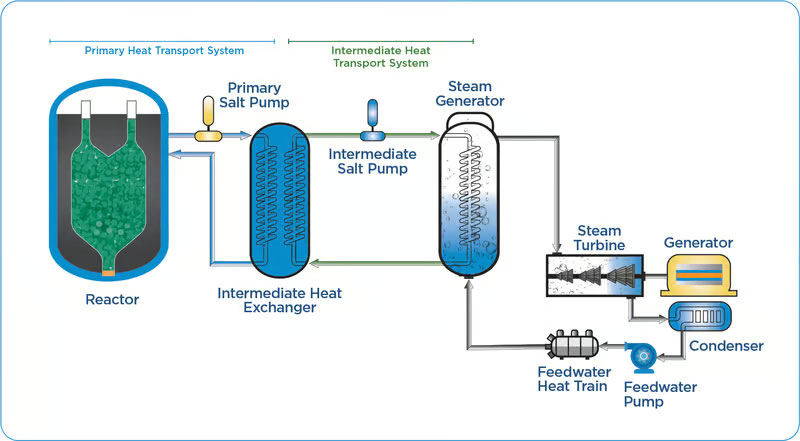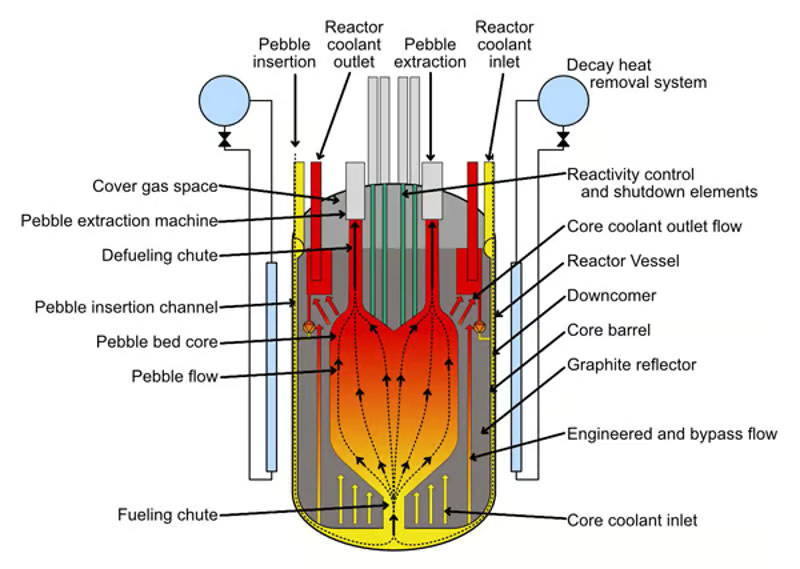Kairos Power announced that it has begun construction of the first nuclear reactor in the United States in 50 years that operates not on water, but on molten salts. The demonstrator facility will be built by 2028 in Oak Ridge, Tennessee. The reactor will not generate electrical energy; it will serve as the basis for the design of a full-fledged fourth-generation nuclear power plant.

The operating principle of the installation with the Hermes reactor. Image Source: Kairos Power
Construction work began on July 17, 2024, as the company announced the other day. In parallel with the Hermes nuclear facility, a non-nuclear demonstrator ETU 3.0 will be created there to test technologies and design solutions without the risk of radiation exposure. The Hermes reactor became the first fourth-generation reactor to receive construction approval from the national regulator. Bill Gates’s congenial fourth-generation reactor from TerraPower is still awaiting such approval.
The Hermes reactor is fundamentally similar to the high-temperature gas-cooled pebble-bed reactor (HTR-PM) launched in China back in 2022. Only the pebble layer in the American reactor will be cooled not by helium, but by molten fluoride salts. According to American engineers, this is safer and more efficient while maintaining all the other advantages of pebble-bed reactors, including independent (passive) stabilization of the reactor core in the event of an accident.

Scheme of the reactor
The fuel for such a reactor is “pebbles” – balls with a diameter of about 6 cm with a poppy seed of uranium fuel inside (these are the so-called TRISO microfuel elements). Fresh balls are poured into the core hopper from above and are gradually removed from below after the fuel has burned out. The coolant in such a reactor is molten salts. They transfer heat (585 °C) to the second circuit of the reactor, also salt, and it heats the water and turns it into steam to rotate the turbine and generate electricity.
In the event of an accident and failure of the pump for pumping the melt through the reactor core, the melt cools the reactor through the process of natural convection, and the decay reaction automatically damps due to the Doppler broadening effect. Recently, China conducted an experiment to simulate an accident at the HTR-PM reactor. The temperature and reaction in the core spontaneously stabilized after 35 hours, and the fuel decay reaction began to decrease in intensity within a few minutes. The American pebble-bed reactor will behave in a similar way in the event of an accident.
«Hermes is a key step toward delivering advanced reactor technologies that have the potential to transform our energy landscape,” said Mike Laufer, CEO and co-founder of Kairos Power. “The lessons we learn from building and operating this reactor will be invaluable in continuing to innovate our testing program and accelerating Kairos Power’s progress towards delivering true cost certainty to our customers.”
We add that the construction of the Hermes installation was supported by a grant from the US Department of Energy in the amount of $303 million. Its completion is expected in 2027.